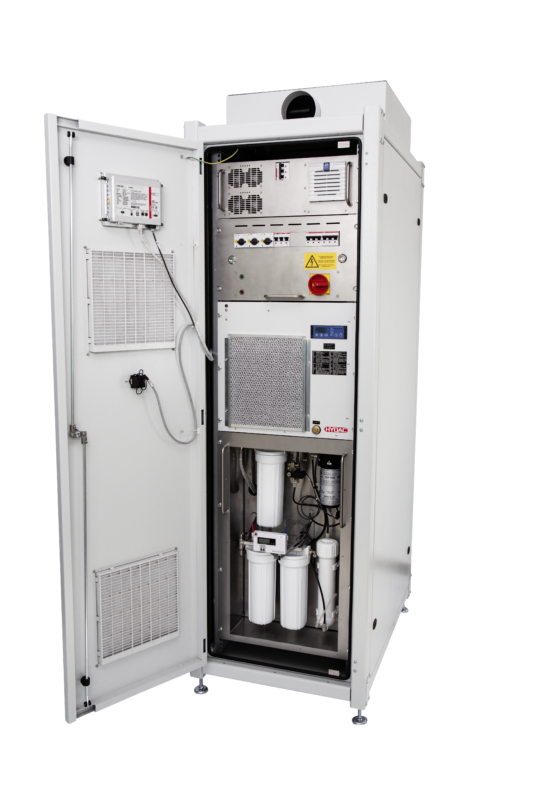From pv magazine Global
Germany’s Ostermeier H2ydrogen Solutions (OHS) GmbH has developed an electrolysis frame module for residential and commercial applications that allows electricity produced in sunny weather to be stored and used to generate electricity and heat again in the winter.

The electrolyzer is sold with a compressor, a pressure storage module, and a fuel cell or a Wankel engine to produce electricity.
“Our system is specially designed to work in combination with rooftop PV power generation,” the company’s owner, Markus Ostermeier, told pv magazine. “A solar array with a battery may offer the optimal solution for the configuration we are proposing.”
OHS currently produces the system at its headquarters in Schweitenkirchen, near Munich, Germany. It is selling the system for seasonal storage starting from €160,000 ($175,400), depending on the project size and applications.
“We sell our devices to schools, agricultural and commercial businesses, as well as to multifamily buildings,” said Ostermeier. “One electrolyzer has been recently sold to the university Hochschule Bremerhaven, two to Fraunhofer Institutes in Germany, and another one to a private company in Aalen, in Baden-Württemberg. We have other clients in Switzerland, Finland and France, and we are planning to produce around 10 electrolyzers this year and another 20 in 2023.”
The system works with tap water and is being offered together with bottles to store hydrogen and a fuel cell or a Wankel engine that OHS buys from external manufacturers. The electrolysis kit is hosted by a 19-inch “ERM” cabinet. The basic version consists of the electrolysis module, the base module, and the control module. The electrolysis module’s stacks are provided by German specialist H-TEC Systems. The system has capacities ranging from 1kW to 100 kW, which corresponds to hydrogen production of 0.2-20 Nm3/h.
As for the power supply, the system operators may choose between an AC/DC power supply with a 400VAC three-phase connection or a DC/DC power supply with a 48 VDC connection. The stack of the electrolysis module is cooled during operation by a standard cooler based on deionized water and the operating temperature is between 55 and 65 C. The heat can be used to support the production of hot water.
“The hydrogen from our system can also be utilized for laboratory applications or as fuel for cars, trucks, forklifts or other vehicles,” Ostermeier said.
Given an electricity price of around €10/MWh, the system should be able to provide green hydrogen at a cost of approximately €12 per kg. “Thanks to its modular design, hydrogen production can be individually and cost-effectively adapted to the different areas of application,” said Ostermeier.
This content is protected by copyright and may not be reused. If you want to cooperate with us and would like to reuse some of our content, please contact: editors@pv-magazine.com.









By submitting this form you agree to pv magazine using your data for the purposes of publishing your comment.
Your personal data will only be disclosed or otherwise transmitted to third parties for the purposes of spam filtering or if this is necessary for technical maintenance of the website. Any other transfer to third parties will not take place unless this is justified on the basis of applicable data protection regulations or if pv magazine is legally obliged to do so.
You may revoke this consent at any time with effect for the future, in which case your personal data will be deleted immediately. Otherwise, your data will be deleted if pv magazine has processed your request or the purpose of data storage is fulfilled.
Further information on data privacy can be found in our Data Protection Policy.